Sissinghurst Castle Garden, part 1: Walls and roses in the English countryside
Sissinghurst. Mecca to gardeners worldwide. Like every traveling gardener, I’d put Sissinghurst Castle Garden at the top of my bucket list, and when we started planning a trip to England I insisted on seeing the famous garden of Vita Sackville-West. So one sunny mid-June morning, we drove from Oxford and arrived a few minutes after opening, which was surprisingly late at 11 am (half the day gone already!).
The “castle” of Sissinghurst, and the reason Vita fell in love with the property in 1930, is this narrow, turreted tower — originally a gatehouse — that dates to the 16th century. Standing alone and looming over an open lawn, the Elizabethan tower dominates the view as you approach.
A brick manor house crouches below the tower, just across the lawn. The pristine carpets of lawn are kept that way via ropes that line skinny stone walkways, keeping visitors on the straight and narrow.
Funneled close alongside the house, squeezing past other tourists — it was very crowded in mid-June — you find plenty to admire, including roses and rose campion as well as beautiful diamond-paned windows.
Trough planters perch atop spindly brick legs, overflowing with frothy flowers…
…and an assemblage of dark-purple violas resembling open-mouthed little faces.
Flowers draw your eye to the curved bricks around windows.
It was June, and the roses were in full, blowsy flower.
Sissinghurst is famous for its garden rooms, defined by tall brick walls or chunky green hedges, and long views that draw you forward into the next room.
The first garden is planted solely in shades of pink, purple, and lavender — what I consider a quintessential English-garden color scheme.
The tumble of flowers is pure romance, and framed nicely by an emerald hedge.
Color!
More!
Over the tall wall, you glimpse the tower and are yourself gazed upon by visitors at the very top, just under the flag.
Did I mention there are roses?
My husband took this photo, cleverly framing the tower between towering, flowering foxgloves. The sea of matching hot-pink flowers in the foreground and the pink-shirted woman strolling in the distance make it even better.
The pink and purple color scheme continues along this path.
Daughter providing scale
I like the addition of burgundy-leaved barberry (I think?) and steel-blue eryngium.
Queen Anne’s lace
In another garden room, curved, chunky hedges surround a circular lawn, across which a marble statue draws the eye. This is appealing at ground level…
…but it’s completely amazing as seen from the tower. From there you can really appreciate the geometry of the rondel, or circular hedge. I’ll have more bird’s-eye views in my next post, Part 2 of my visit to Sissinghurst.
Circling around the curved hedges, you see another statue gazing directly at you.
The figure of a woman playing cymbals, she glows against an emerald hedge.
She leads you to a long lime walk, a double row of pleached lime trees. Notice the folding slatted chairs set out under the trees, perfect for enjoying the scenery.
Halfway along the lime walk
Hot reds and yellows dominate the sunny cottage garden.
A red rose scrambles up a ruin-like section of wall.
Rocket-sized yew pillars guard a verdigris copper planter, loosely planted and underplanted.
Orange geum
The bees like it too.
Lemon-yellow irises stand tall near a couple relaxing on a shady bench.
Along another long axis I caught life imitating art: a woman with her elbow lifted and crooked, just like the statue she’s photographing.
And without the mimicry
Yet another statue, a toga-togged young man, seems to stroll through a bed of ferns.
I have no idea what these are — some sort of seedpod — but they’re mesmerizing. We saw these in Monet’s Garden too.
This garden room is centered on a low dish of sempervivum, with yellow and purple flower spikes standing tall against a backdrop of green hedge.
Flowering mullein
I’m color-coordinated.
A bench of old brick and architectural relics has an especially cushy seat of chamomile. No sitting allowed though.
Sempervivums float like waterlilies in the gravel pool of the container. The edgewise paving detail around it is lovely too.
Coming up next: Part 2 of my tour of Sissinghurst, including the famous White Garden and aerial views from the tower. For a look back at Rosemary Verey’s garden at Barnsley House, click here.
I welcome your comments; please scroll to the end of this post to leave one. If you’re reading this in a subscription email, click here to visit Digging and find the comment box at the end of each post.
_______________________
Digging Deeper: News and Upcoming Events
Join the mailing list for Garden Spark Talks! Inspired by the idea of house concerts, I’m hosting a series of garden talks by inspiring designers and authors out of my home. Talks are limited-attendance events and generally sell out within just a few days, so join the Garden Spark email list for early notifications. Simply click this link and ask to be added.
All material © 2006-2018 by Pam Penick for Digging. Unauthorized reproduction prohibited.


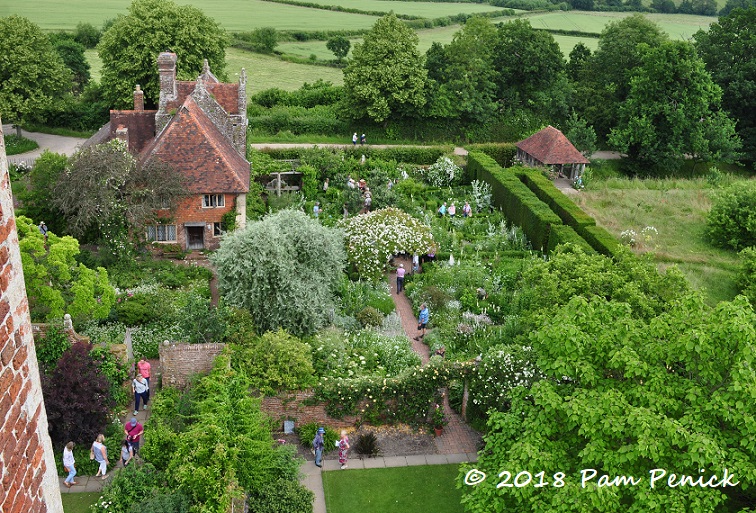
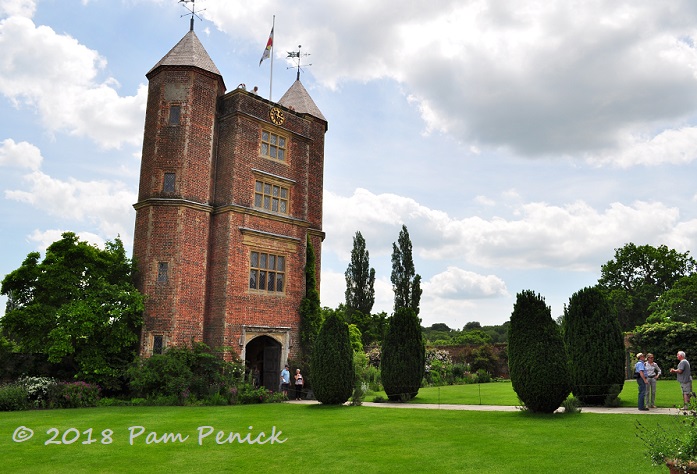
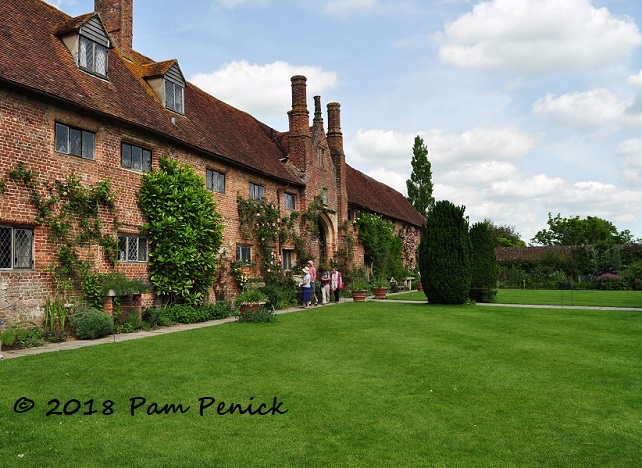
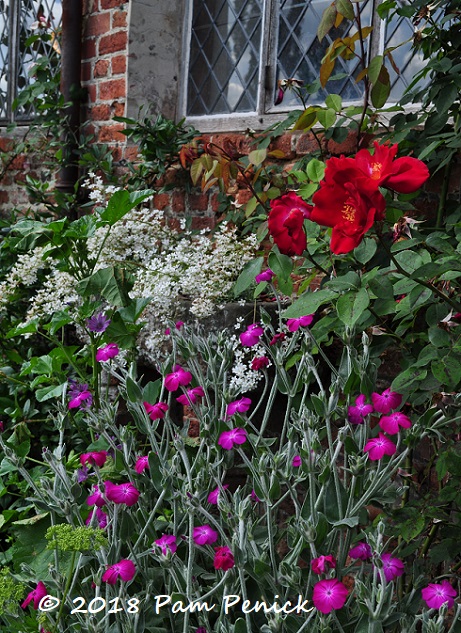
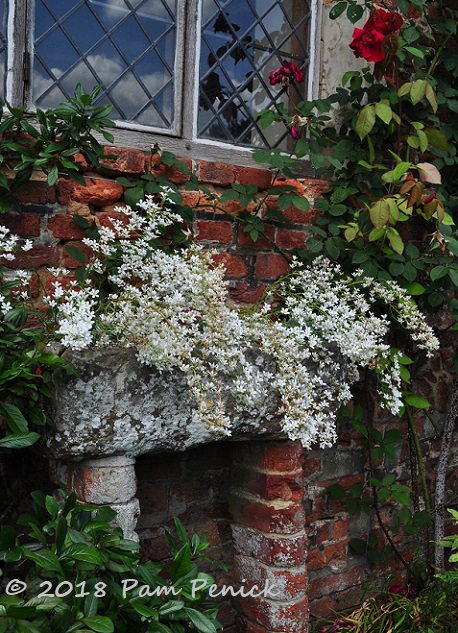
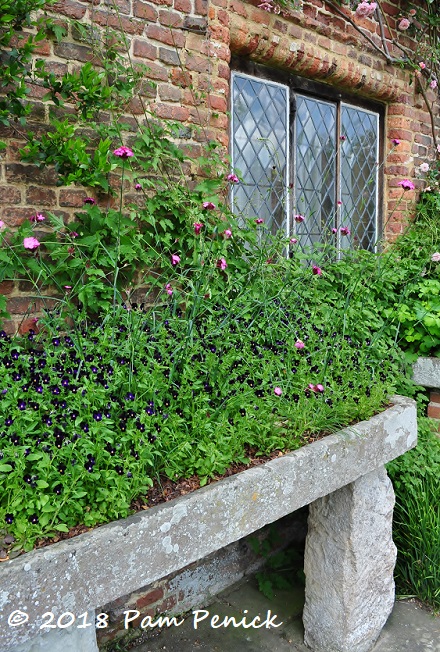
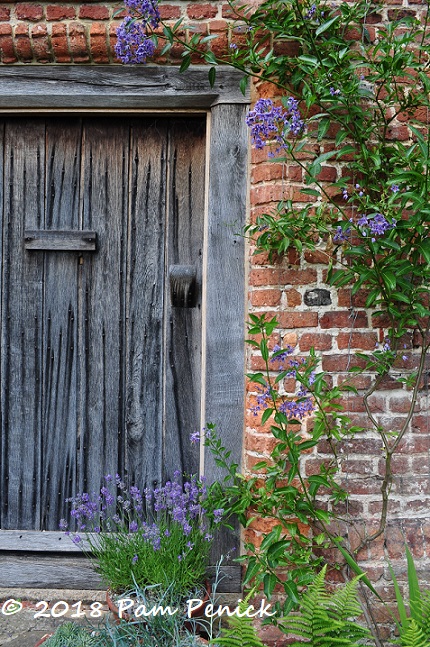
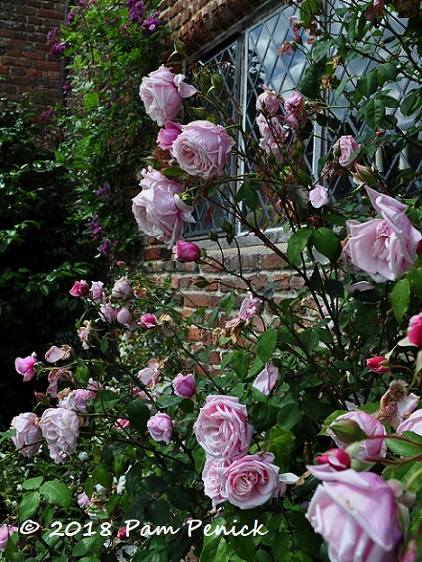
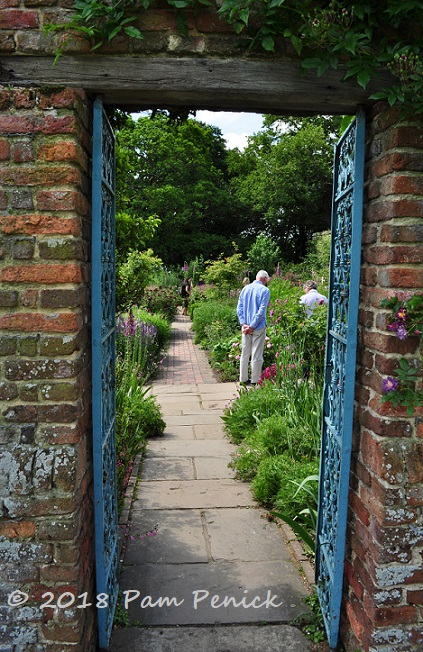
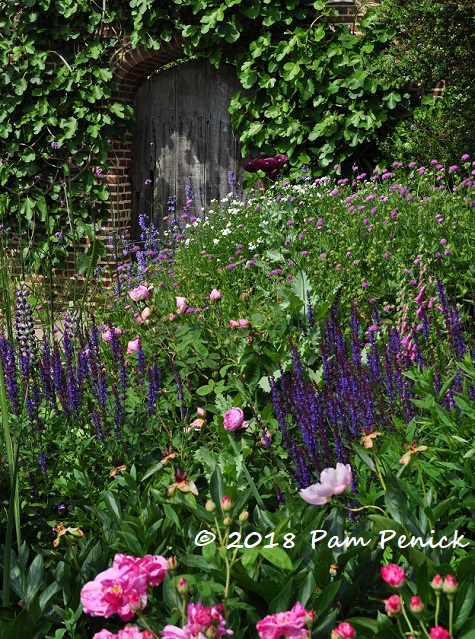
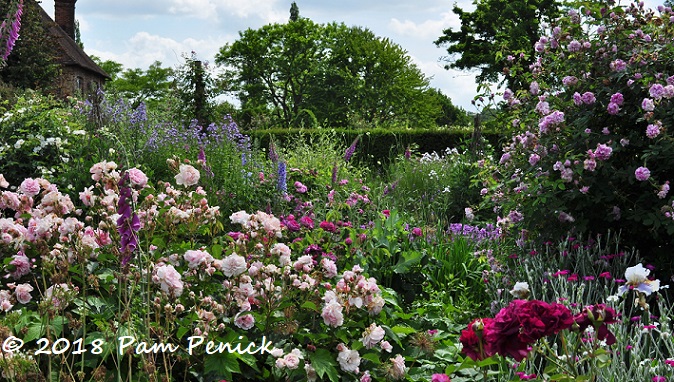
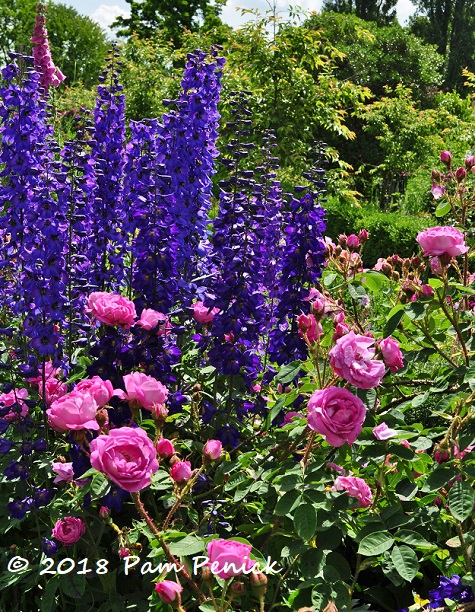
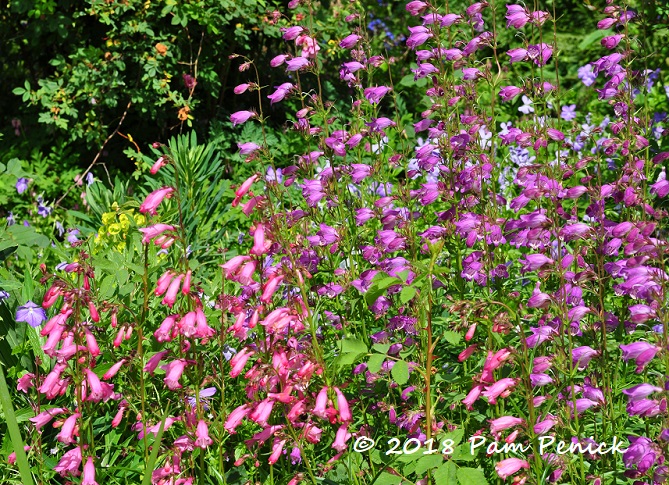
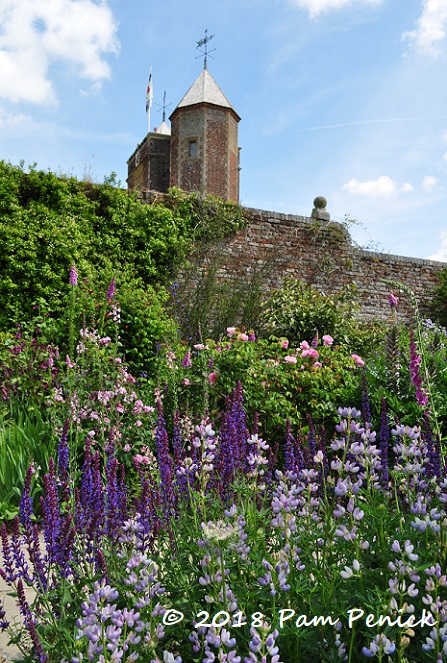
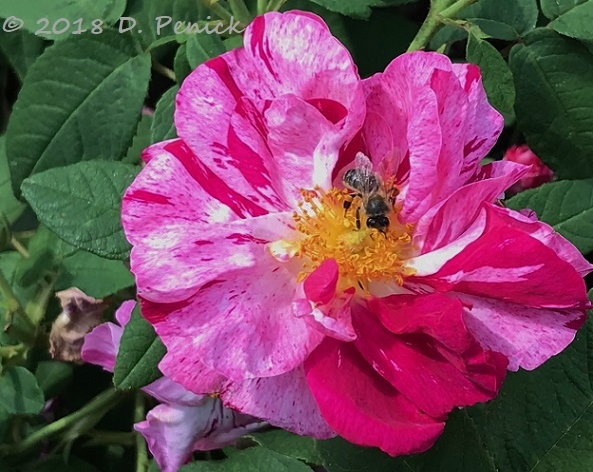
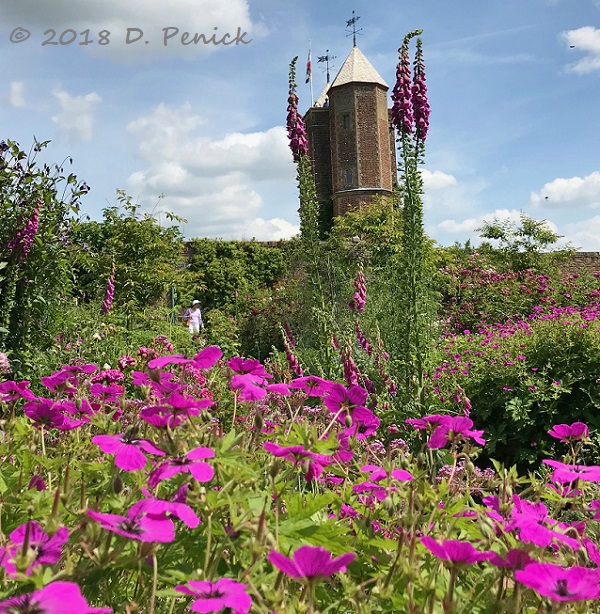
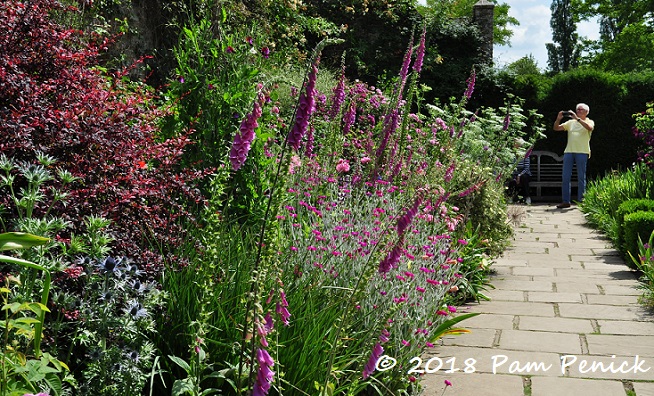
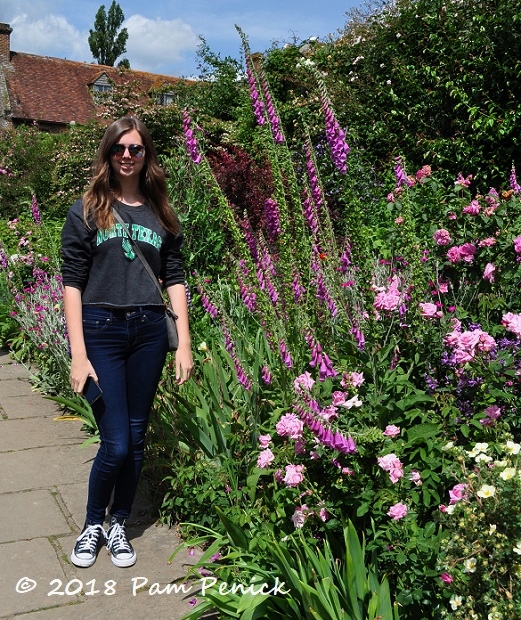
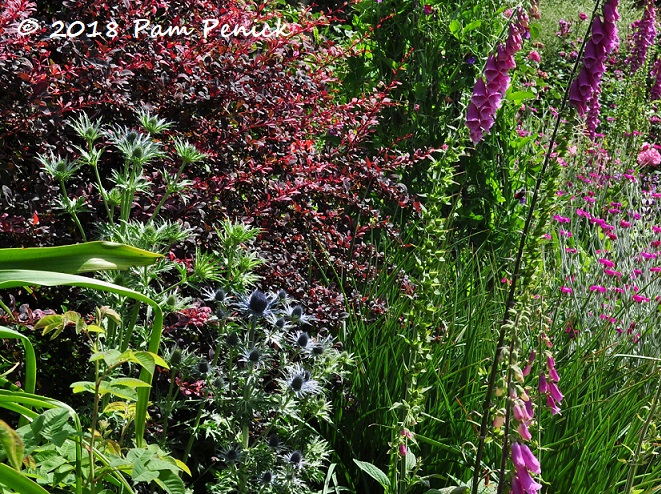
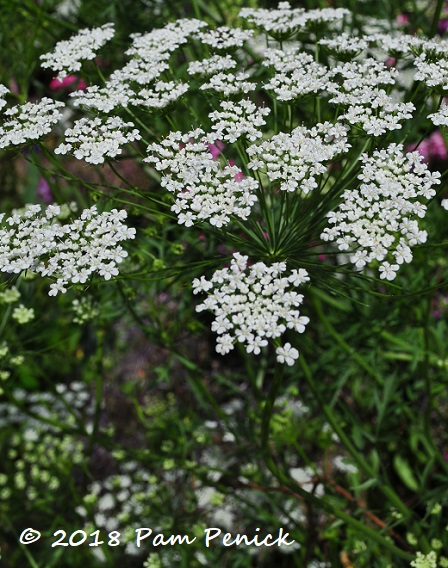
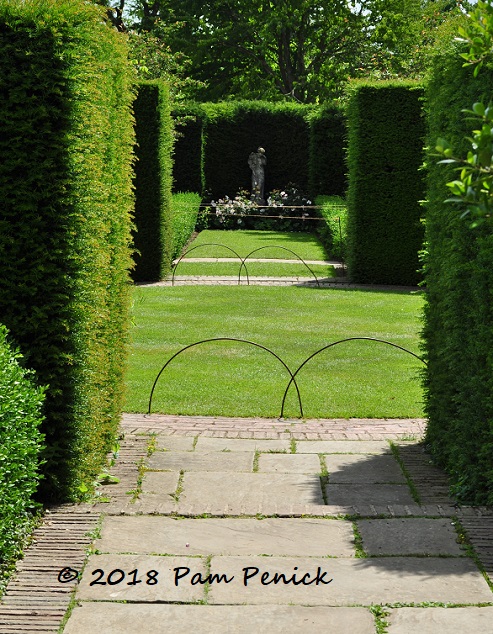
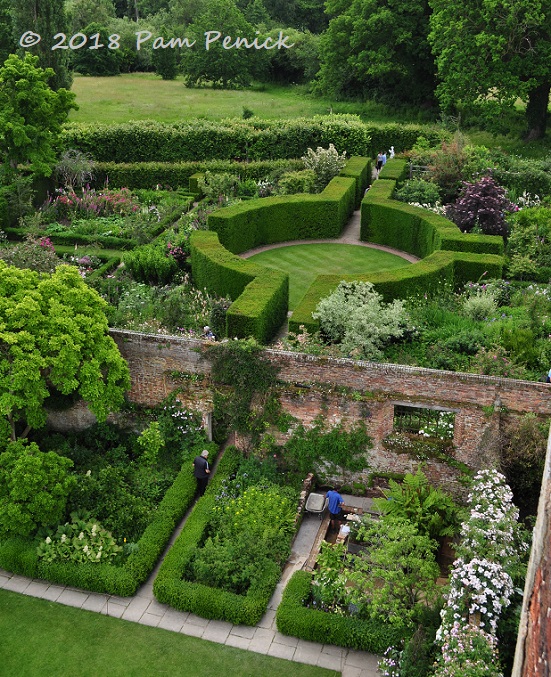
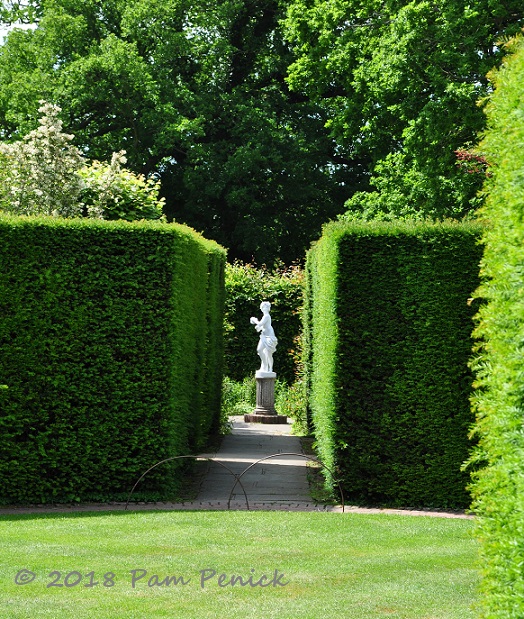
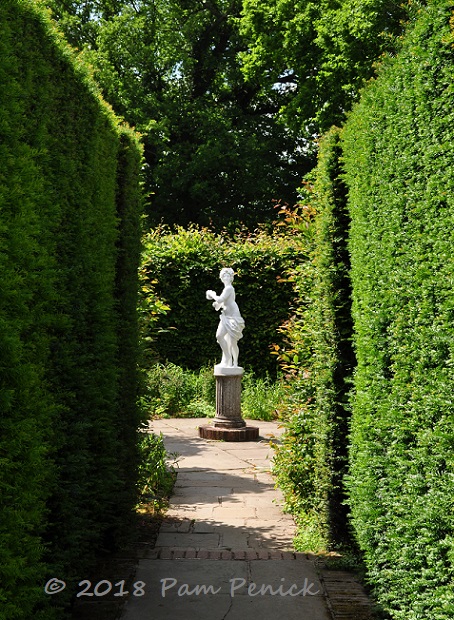
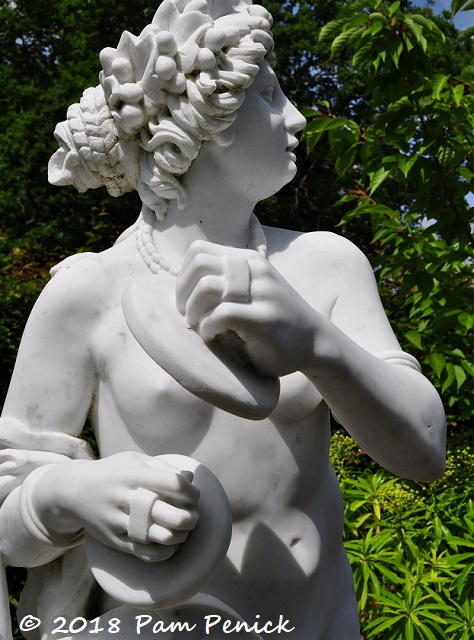
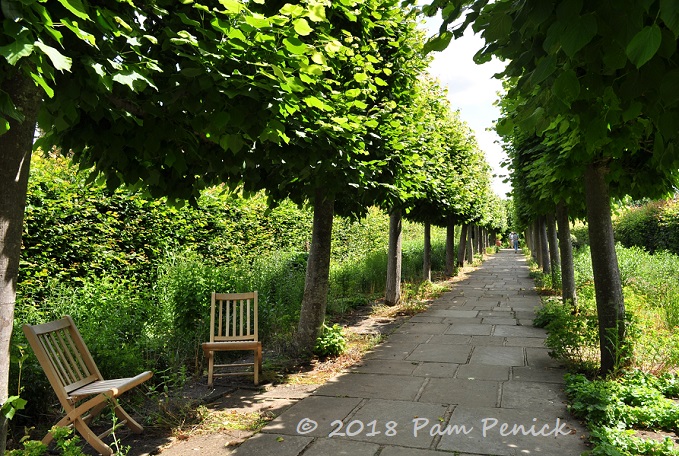
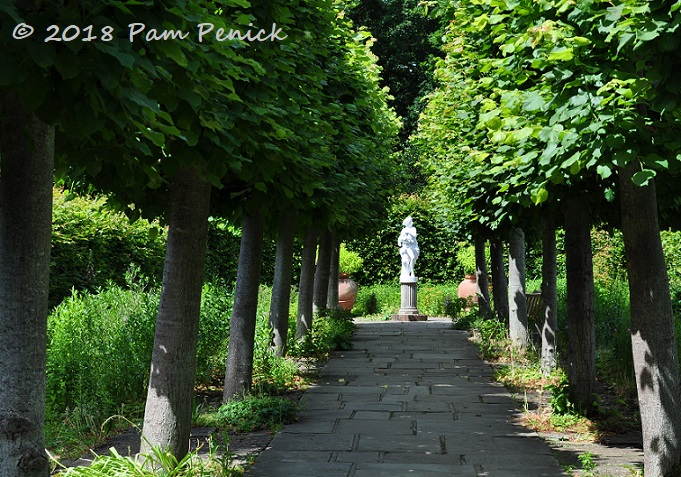
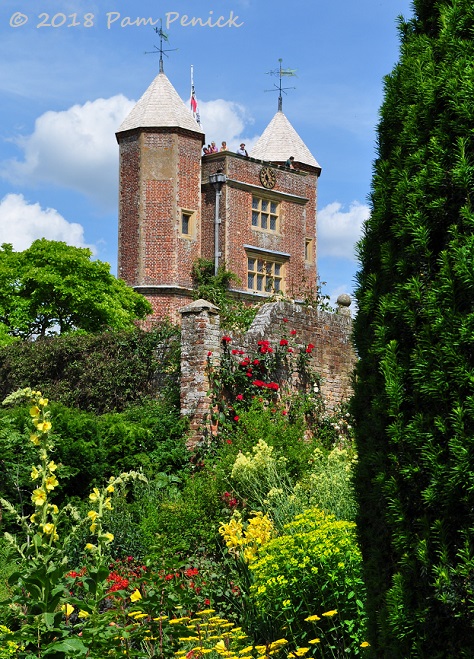
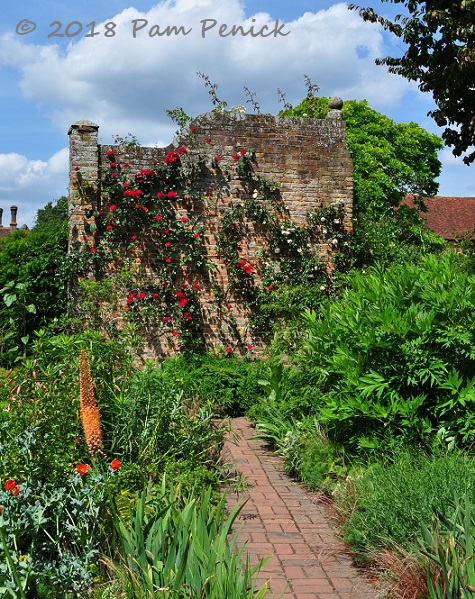
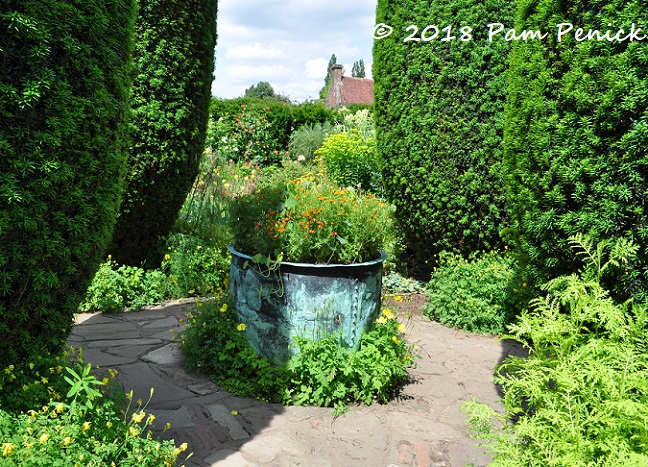
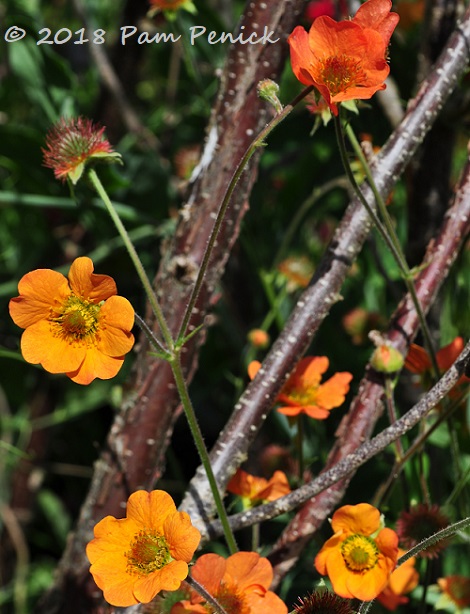
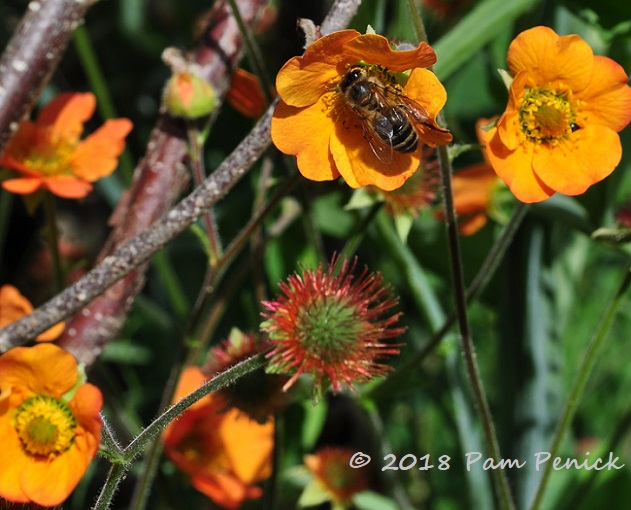
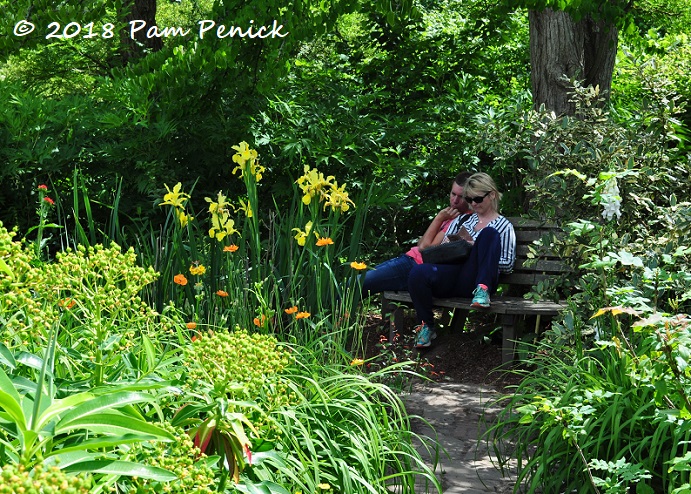
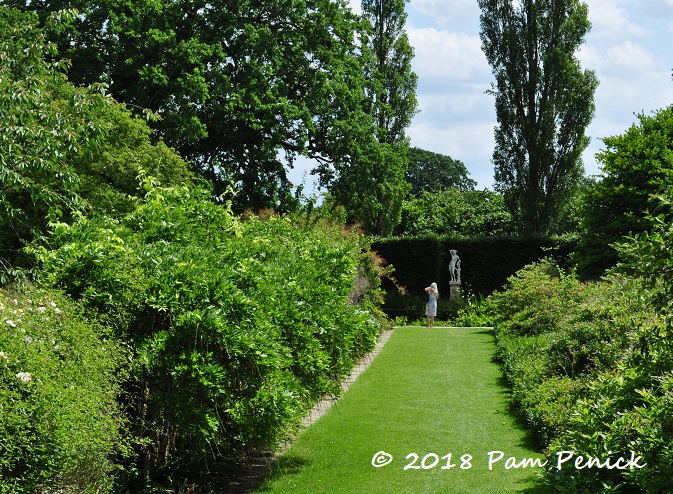
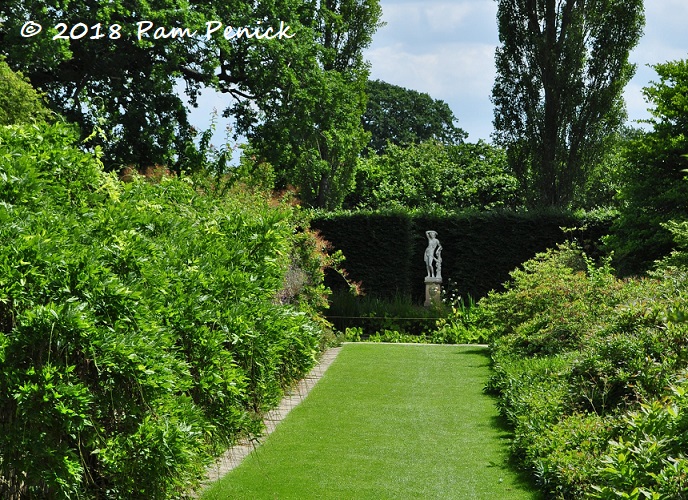
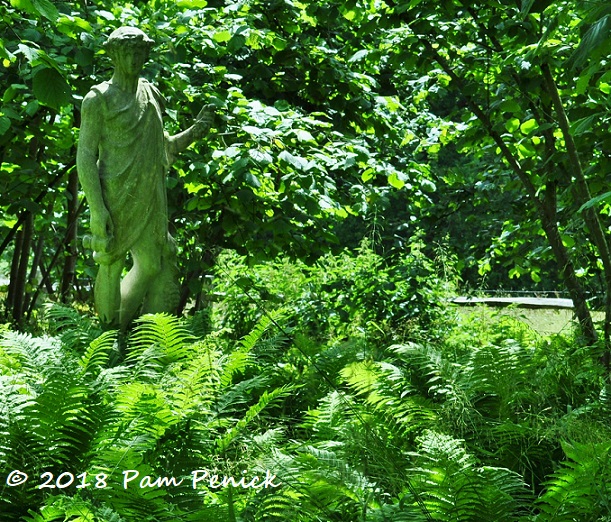
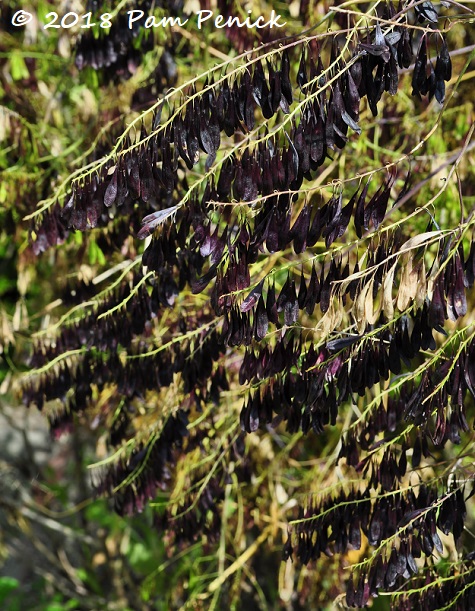
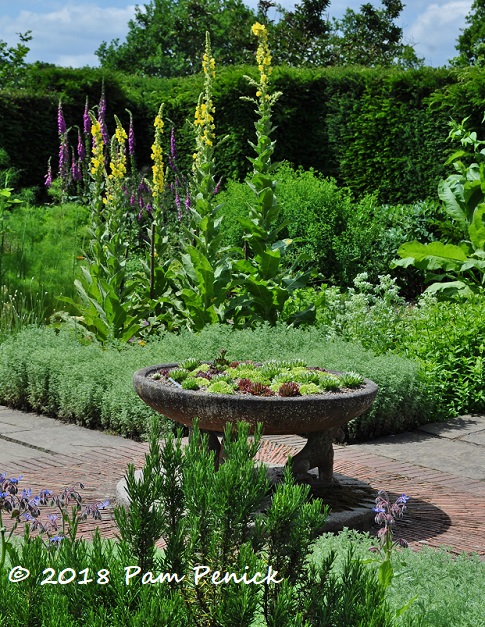
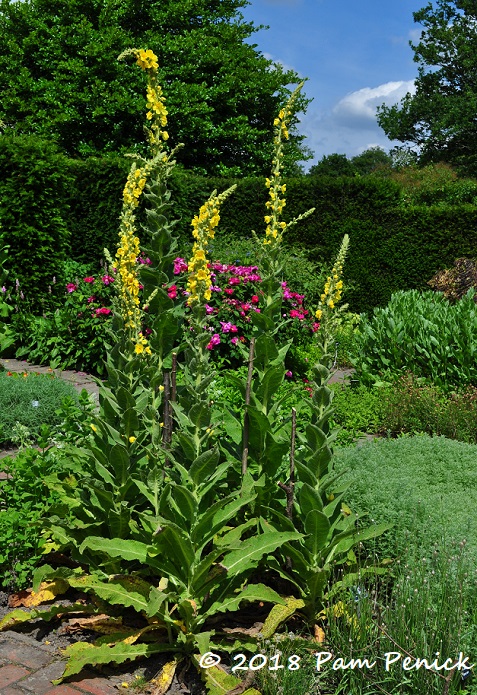
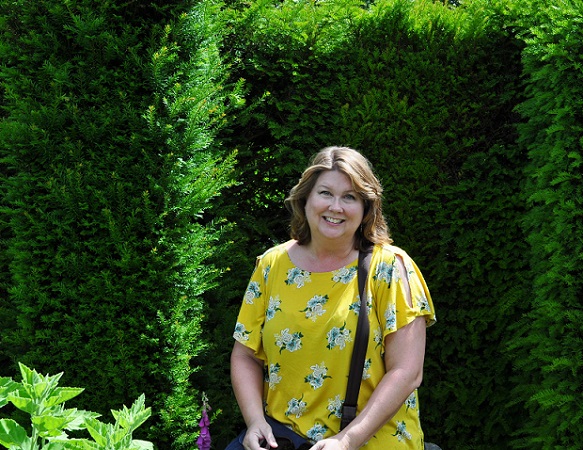
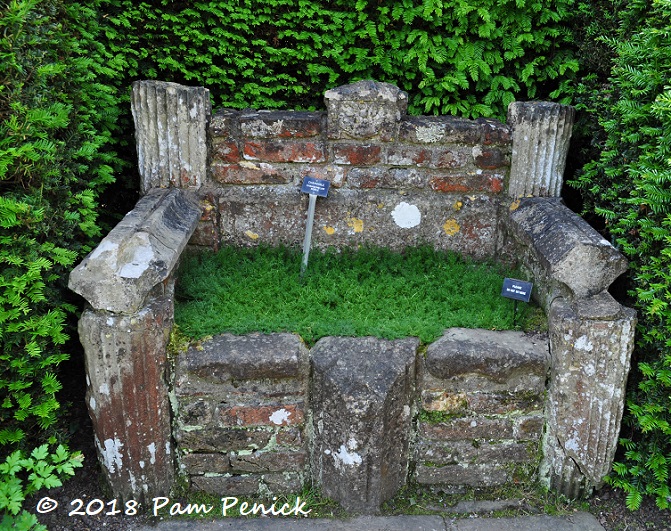
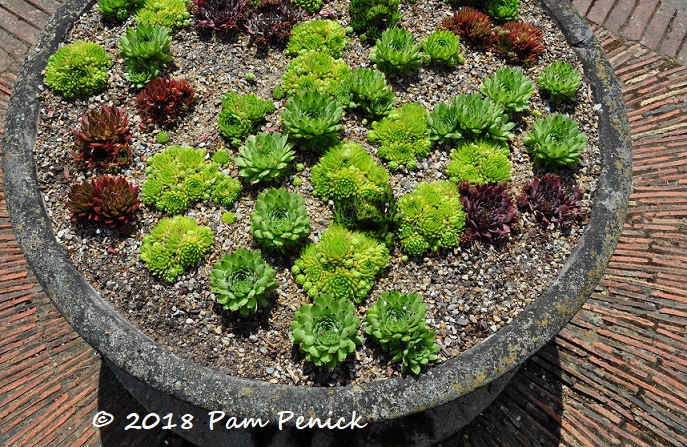
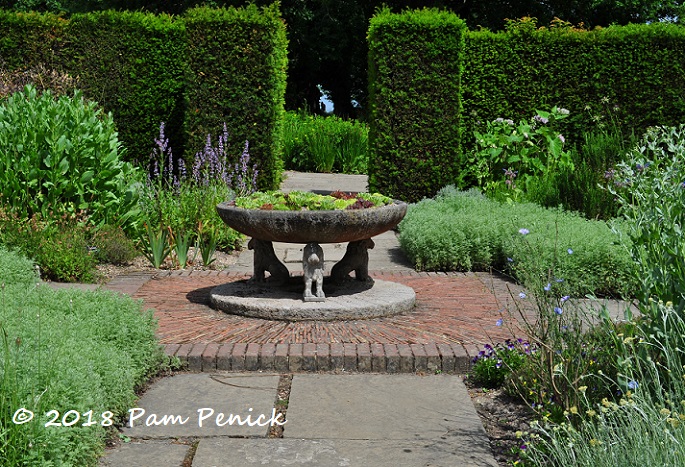
I guess the 11am opening time gives them time to get the gardening jobs done and for you to enjoy the full English. I was looking at your photos to see if I could see changes in the garden from when we were last there. I know there was talk about the Trust returning it to Vita’s garden as she intended. A lot to do with the roses. The view from the tower is amazing and David has quite the eye for a shot.
There was gardening going on while we were there (you can see a guy with his wheelbarrow in the tower view of the rondel), but yes, perhaps that’s why. Still, I found it disappointing to get such a late start to the day, compared to visits at public gardens in the States (9 or 10 am at the latest). We had only one day to see both Sissinghurst and Great Dixter, and it was a real push to make it through both gardens with so little time. I feel that I missed a lot.
Despite that complaint, the garden was truly lovely. I can see why it is so touristed. Like you, I read that article about the garden being restored to Vita’s vision: looser plantings, more roses. Having not seen it before, I couldn’t tell. But it is impeccably maintained for sure.
My #1 bucket list too, it is probably the garden I have studied and read about most. So glad you got to visit and your photos are wonderful.
Thanks, Philip! I hope you are able to get over there one day. Really, the only trouble with seeing gardens in England is narrowing down the choices.
What a thrill (both for you and for me reading about it)! I’d love to see this garden some day. What a bummer that you had to wait till 11 a.m. and had only one day to see both this and Great Dixter. Were you at least allowed to touch the chamomile? I’ve heard it smells nice.
I touch everything, so I’m sure I did – ha!
That stone container with sempervivums is one of my favorite details at Sissinghurst (which I know only from pictures and books) — the 1930s/Egyptian revival look of the container itself, its use as a focal point in the herb garden, the paving details of its square plinth… so I’m grateful for your several shots.
It inspired me to do an image search that revealed a couple of things. One, that the sempervivums work much better than thyme in the container. Two, that the marble cymbal-player statue has been recently cleaned/restored (and IMO will benefit from a few seasons of re-weathering to fit more comfortably back into the garden).
Somehow, in all the pictures I’ve seen, I’d never noticed the remnant wall in the cottage garden that’s now clothed with the hot red climbing rose. Maybe it was previously covered with ivy or another green vine that made it function more as background than feature? Glad you were there for its peak moment.
David’s shot of giant foxgloves engulfing the tower made me laugh out loud.
Looking forward to part 2, and to Great Dixter. It’s a shame you all were time-constricted, but you wouldn’t know it from these excellent photos.
Great info, Nell. Thanks for sharing about the statue and the sempervivum container.
I believe that only the English can grow foxgloves that tall. Aren’t they amazing?! The whole place is amazing to me. I love seeing it through your lens. You did a great job not getting too many tourists in the pictures. That is a feat in itself. I can’t wait to see more.
Coming tomorrow, Lisa!
What lovely virtual tour. The placement of gardens around historical castles and ruins makes me think about those who created and tended the gardens so long ago. While the times may have been dramatically different, some things , like the love of a beautiful garden, never change. I’m wondering if we can grow germ here?
Is that a typo – “germ”? Now I’m wondering what you were wondering about. 🙂 But yes, lots of history in this garden, and indeed in all the gardens we visited.
Geum? I love that colour!
Ah, of course! Yeah, it’s a beauty.
*SIGH* Thanks for sharing your photos.
My pleasure, Kris. 🙂
A great garden, and one that’s evolving beautifully through time, I think. Thanks for the tour!
You’re welcome, Lisa. Thanks for your comment!
What a great post about Sissinghurst, Pam! I am jealous! I went there about 30 years ago, but can’t really remember so good. Found your blog and I am curious now about gardening in Texas.
Greetings from Germany
Sigrid
Thanks for stopping by, Sigrid! I imagine gardening in Germany is pretty different from gardening in Texas, but a love of gardens needs no translation, am I right?
Incredibly beautiful, creative, and well maintained! I’ve loved reading about this garden for years and your pictures are fabulous. One day, I hope to see it in person.
Thanks, Peter. If you go, I hope you’ll have even more time for garden tours. There are so many highly rated public gardens to visit in England, and never enough time.
I enjoyed touring Sissinghurst with you, Pam. That view from the tower is amazing. I’ve decided I need more spiky, purple plants in my PA ‘English’ garden. P. x
Thanks for coming along, Pam!